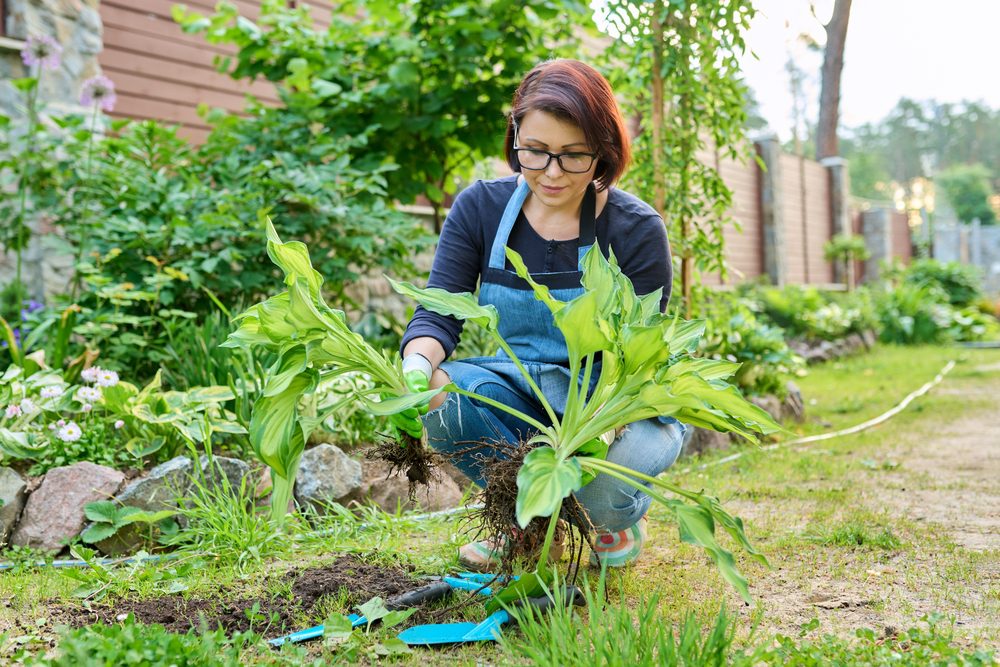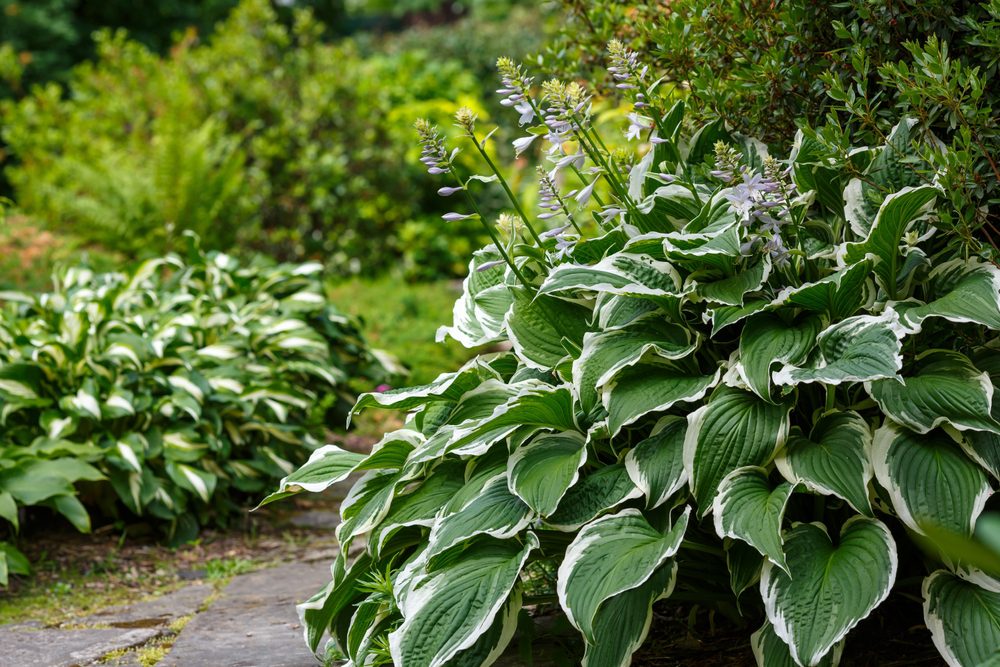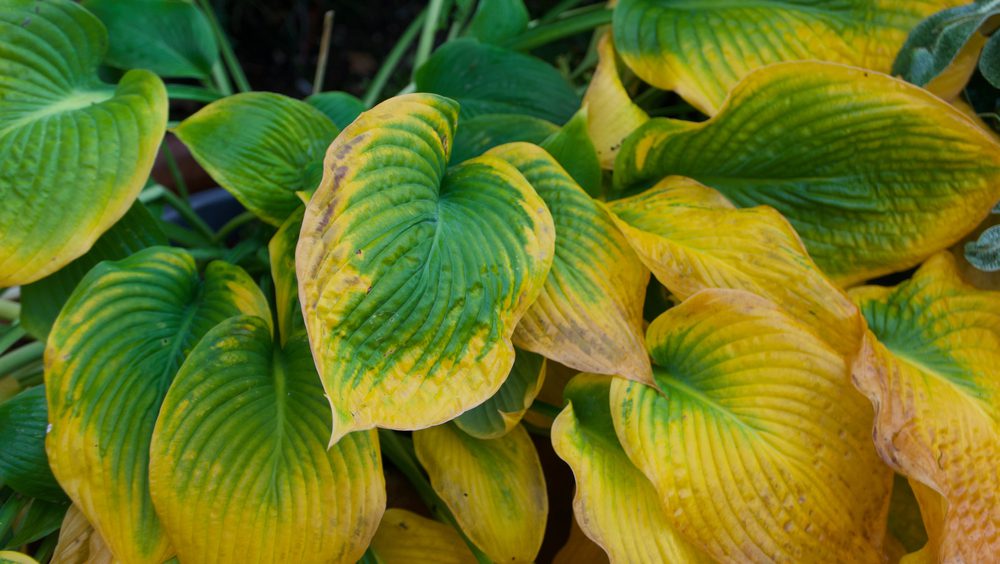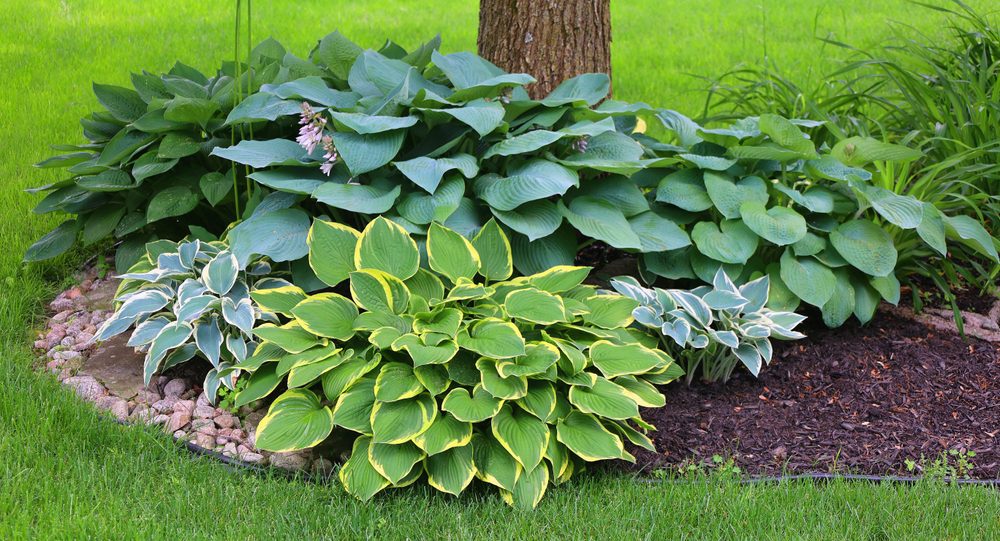Hostas are a favorite in many gardens, known for their lush foliage and ability to brighten up shady spots. Whether you’re an experienced gardener or just getting started, caring for hostas is simple and rewarding. With a little attention, these hardy perennials will continue to thrive, adding beauty and texture to your garden for years to come.
By focusing on proper planting, watering, and maintenance, you can be sure your hostas stay healthy and vibrant through every season.
What Are Hostas?
Hostas are popular, shade-loving perennials known for their striking, broad leaves that come in various shades of green, blue, and variegated patterns. While they’re primarily admired for their leafy appearance, hostas also produce tall flower stalks with delicate lavender or white blooms in summer.
These robust plants excel in shady areas, making them a great choice for borders, ground cover, or container gardens. With countless varieties available, hostas are a versatile and low-maintenance addition to any landscape.
General Care Tips
Hostas are low-maintenance plants that do well with just a little attention. They prefer well-drained soil, partial to full shade, and consistent moisture. While they are resilient, regular care like watering, mulching, and pest control will keep them strong and looking their best.
Light
Hostas flourish in partial to full shade, making them ideal for areas of your garden that don’t get much direct sunlight. While most varieties prefer shady spots, some can tolerate a bit of morning sun. However, too much direct sunlight, especially in the afternoon, can cause leaf scorching or discoloration.
For the best results, plant your hostas in areas that get filtered light or dappled shade, ensuring their foliage stays lush and vibrant.
Water
Consistent moisture is key for healthy hosta plants. Aim to keep the soil evenly moist, especially during dry spells, but avoid overwatering, as soggy conditions can lead to root rot. A deep watering once or twice a week is usually enough, though newly planted or divided hostas may need more frequent care as they establish.
Adding a layer of mulch around the plant can help retain moisture and protect the roots from temperature fluctuations.
Temperature & Humidity
Hostas are hardy plants that can tolerate a wide range of temperatures. They perform best in cooler climates and grow well in zones 3 to 8, perfect for the relatively mild Chicago (Zone 5) weather. While they can handle hot summers, too much heat combined with direct sunlight can stress the plant and cause leaf scorching.
Humidity isn’t usually a concern for hostas, as they can adapt to varying levels. However, during periods of extreme heat, make sure they receive enough moisture to prevent the leaves from wilting.
Soil & Fertilizer
For optimal growth, hostas benefit from rich, well-drained soil that holds moisture without becoming too soggy. Amending the soil with organic matter like compost or well-rotted manure improves its structure and nutrient content. While hostas can adapt to various soil types, they do best in slightly acidic to neutral soil (pH 6.0 to 7.5).
Fertilizing isn’t always required, but applying a balanced, slow-release fertilizer in spring can promote vigorous development. Be cautious not to over-fertilize, as this can lead to excessive greenery, attracting pests and increasing the risk of disease.
Planting Hostas
Planting hostas is a simple process that sets the foundation for healthy growth. These adaptable plants do well in partial to full shade and well-drained soil. When selecting a spot, be sure to account for the mature size and space needed for their spreading leaves.
Tips for Planting
When planting hostas, following a few key tips can ensure they establish well and flourish in your garden:
- Dig the Right Hole: Make sure to dig a hole that’s twice as wide as the root ball and deep enough to fully cover the roots without burying the crown (the part where the roots meet the stem). A wider hole allows the roots to spread more easily and promotes robust growth.

- Space Accordingly: Proper spacing is important to give your hostas room to grow. Depending on the variety, you’ll want to leave 1 to 3 feet between plants. This not only allows their leaves to spread without crowding but also provides good air circulation, which can prevent disease.
- Loosen the Soil: Before placing the hosta in the hole, loosen the soil at the bottom and around the edges. This will help the roots spread more easily, giving the plant a better chance to establish quickly. It’s also a great time to mix in a soil amendment like One Step. One Step contains compost to enrich and loosen the soil, plus mycorrhiza, which supports healthy root growth for a strong start.
- Water Well: After planting, water deeply to settle the soil and eliminate air pockets around the roots. Thorough watering helps the plant adjust to its new home, and regular watering in the first few weeks is essential for strong root development.
Seasonal Care
Caring for hostas throughout the year keeps them looking their best in every season. Here are a few key care tips for each time of year:
- Spring: This is the best time to fertilize your hostas and clean up any dead leaves or debris, but be sure to wait until temperatures consistently reach at least 50°F. This helps avoid disturbing overwintering caterpillars and other beneficial insects. Once it’s warm enough, it’s also a great time to divide and replant overcrowded hostas.
- Summer: Keep the soil consistently moist, especially during dry periods. Mulching can help retain moisture and protect the roots from heat.
- Fall: Trim back dying foliage as the plants prepare for winter dormancy. This is also a good time to add a final layer of mulch to insulate the roots.
- Winter: Hostas will die back completely. Leave a layer of mulch or fallen leaves over the soil to protect the roots from freezing temperatures.
Maintaining Hostas
Hostas are fairly easy to maintain, but a few regular tasks can keep them in great shape. From occasional pruning to making sure they have the right growing conditions, maintaining your hostas will promote long-term health and beauty.
With a little attention throughout the season, your hostas will continue to enhance your garden year after year.
Pruning & Propagating
Pruning hostas helps maintain a neat appearance and prevent disease. Throughout the growing season, remove any yellowing or damaged leaves as needed to keep the plant looking fresh.
For propagating, the most common method is dividing the plants. This involves splitting a mature hosta into smaller sections that can be replanted. Dividing is best done in early spring or fall, providing a simple way to expand your garden or share plants with others.
Splitting
Splitting is the easiest and most common way to propagate hostas. Over time, hostas can become overcrowded, making splitting an important part of maintaining their health.

To split a hosta, gently dig up the plant and divide the root clump into smaller sections, ensuring each section has healthy roots and shoots.
This process is best done in early spring, just as new growth begins, or in the fall when the plant is preparing for dormancy. After splitting, replant the sections in well-prepared soil, water them thoroughly, and give them time to settle into their new spots.
Potting
Hostas grow well in containers, making them a great option for patios or small garden spaces. When potting hostas, choose a container with good drainage that’s large enough to accommodate the plant’s root system, leaving room for growth.
Use a high-quality potting mix, preferably one enriched with organic matter to retain moisture while allowing for proper drainage. Water potted hostas regularly, as they tend to dry out faster than those planted in the ground. Every few years, repot or divide the hosta to prevent overcrowded roots.
It’s important to note that while hostas do well in containers during the growing season, they may struggle to survive Chicago’s harsh winters if left outside. For better chances, move the pot to a shed or garage to protect it from freezing temperatures. However, even with this extra care, survival rates are about 50/50. For long-term success, it may be best to treat container-grown hostas as seasonal plants and bring them back outdoors in the spring.
Companion Plants
Pairing hostas with the right companion plants can enhance both the look and health of your garden. Since hostas do well in shady areas, they pair nicely with other shade-tolerant plants. Ferns, astilbes, and heucheras are excellent companions, adding texture and color contrast to the garden. Plants with contrasting textures, like Japanese forest grass, also complement the low, spreading nature of hostas.
Choosing companion plants that prefer similar growing conditions—such as moist, well-drained soil and partial to full shade—will ensure all plants thrive together harmoniously.
Types of Hostas
With so many different sizes, colors, and textures, hostas offer something for every garden. For a compact option, ‘Mouse Ears’ is perfect for borders or containers, while ‘Empress Wu’ stands out with its massive, dramatic leaves.
When it comes to color, the variety is just as wide. ‘Blue Angel’ has striking blue-green foliage, and ‘Patriot’ features green leaves with crisp white edges. If you’re looking for a pop of brightness, ‘Sun Power’ adds golden yellow tones to shady areas.
No matter your garden style, there’s a hosta that will fit perfectly.

Encouraging Blooming
While hostas are prized for their foliage, they also produce attractive flowers during the summer. To promote blooming, make sure your hostas are planted in well-drained soil and receive the right amount of light—most varieties bloom best in partial shade with some morning sun.
Regular watering, especially during dry periods, and a light application of balanced fertilizer in the spring can also support stronger blooms. Deadheading spent flowers not only keeps your hostas looking neat but also redirects energy back into the plant, helping it grow healthier.
Pests & Diseases
While hostas are generally easy to care for, they can occasionally face problems with pests and diseases. Slugs and snails are the most common culprits, as they love to munch on hosta leaves, leaving unsightly holes behind. Other pests like aphids, deer, and rabbits can also cause damage, particularly to tender new growth.
In terms of diseases, hostas are sometimes affected by fungal infections like leaf spots or crown rot, especially in overly wet or poorly drained soil. Proper spacing, good airflow, and avoiding overwatering can prevent these issues.
Growing Hostas from Seeds
Growing hostas from seeds can be a rewarding, though slower, method of propagation. While most gardeners prefer dividing mature plants for quicker results, starting from seeds allows you to experiment with new varieties. Keep in mind, that hostas grown from seeds may not always resemble the parent plant, especially with hybrid varieties.
To begin, collect seeds from mature hosta flowers once they’ve dried out in the fall. Plant the seeds in well-draining potting soil, keeping them warm and consistently moist. Germination can take a few weeks, so patience is key. Once the seedlings are large enough to handle, transplant them into individual pots or garden beds, ensuring they’re placed in a shaded spot.
Common Problems
While hostas are known for being low-maintenance, they can encounter a few common problems. One of the biggest issues is pest damage, especially from slugs and snails, which feed on the leaves and leave behind unsightly holes. Deer and rabbits are also frequent culprits, often nibbling on the tender vegetation, particularly in spring when new growth emerges.
Fungal diseases such as crown rot and root rot can develop if hostas are planted in poorly drained soil or receive too much water. These conditions often lead to yellowing, wilting, or mushy roots, which can severely affect the plant’s health. Additionally, leaf spot, a fungal infection, may cause brown or black spots on the foliage, particularly in humid conditions.

Environmental stress can also pose problems. Hostas that receive too much direct sunlight may develop scorched or yellowing leaves. Conversely, lack of water during hot weather can cause the leaves to wilt and lose their vibrant color.
Regularly inspecting your plants and addressing problems early, whether it’s pests, disease, or environmental factors, can go a long way in maintaining healthy, beautiful hostas.
Visit Platt Hill Nursery to Find Beautiful Hostas
Looking to add some stunning hostas to your garden? Platt Hill Nursery offers a wide variety of hostas in all shapes, sizes, and colors, perfect for any landscape. Whether you’re looking for compact varieties for containers or large, dramatic plants to make a statement, we’ve got you covered.
Stop by our locations in Carpentersville or Bloomingdale to explore our selection, or browse our online plant list. Our knowledgeable staff is here to help you choose the perfect hostas for your garden and offer tips on how to care for them.


